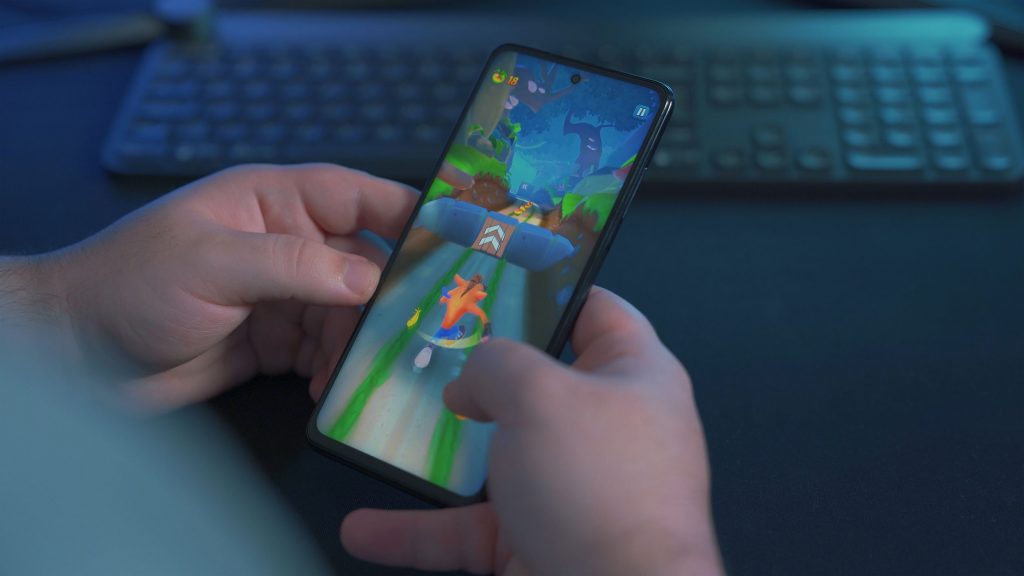What is in-game marketing? Any campaign strategy a marketer can develop inside a video game.
In-game marketing allows brands to pay for their names or products featured in digital games. Billboards placed in virtual cities can feature the logos of major corporations, while racing games can feature real cars made by Ford or Chevy.
Video games have become incredibly immersive in the last ten years. The level of detail in today’s games allows gamers to enter another universe where they engage with sights, sounds, stories and interactive gameplay. And as the quality of video improves, the number of players has increased.
There were almost 2 billion video gamers across the world in 2015 and this figure is expected to rise to over 3 billion gamers by 2023. The video gaming industry is huge and shows no signs of slowing down.”
J. Clement. Statista 2022
Although this article will deal with IN-GAME marketing, the first cases of brands taking an interest in this world refer to advergaming. In the early 80s, Coca Cola created Pepsi Invaders, a version of Space Invaders where they fought against their main competition. McDonald’s and 7Up soon followed Coca Cola, with games like Donald Land or Cool Spot. But it wasn’t until 1984, when we found the first case of in-game marketing, in the Micro Olympics game, with a sports theme, that following the example of analogue events, included advertising for technology companies on stadium billboards.
Why use in-game marketing strategies?
Given that video games are so immersive, any ad or product placement is more likely to be registered by the gamer as they are already 100% invested in the game.
The interactivity of games also allows for more clever and subtle forms of advertising. Rather than bombarding gamers with logos or slogans, marketers can work their messages into the gameplay in a way that feels vital to the experience. The ads become a feature rather than a distraction.
In-game advertising options are also highly customizable. Up to 80% of video game consoles connect to the Internet, allowing them to receive updated content regularly. Marketers can change and segment their advertisements, choosing when ads show up and whom they target.
Some advertisers have even taken the step of developing their games explicitly for marketing. Many famous movies mature simple online games based on scenes from the film.
These interactive ads allow companies to push strong marketing messages while entertaining their most interested customers.
Who is playing what and where
Apart from product placement, during the end of the first decade of 2000, the brands linked directly to sports had it the easiest. They replicated what they did in the real world.
A simple example:in 2010 Virgin sponsored the Brown F1 team, the same real-world sponsorship translated to the video game. The same thing happened with MotoGP, MXPro, and Fifa with billboards in football stadiums or 2K in basketball.
Virtual Concepts placed Nike and Puma logos in the NBA 2K22 game. The relevance of this brand strategy completes the game experience and raises brand awareness.
In 2008, Barack Obama’s Presidential campaign ran ads in popular sports games that only appeared to gamers living in swing states.
The famous video game Fortnite has often collaborated with fashion brands such as Balenciaga or Jordan brand. Both have adventured in-game marketing by fitting the player’s avatars.
Fortnite also announced an extraordinary activation, a food fight event between Team Pizza and Team Burger, where brands such as Wendys could launch an organic meta campaign to promote its burgers. Team burger stored its meats in freezers, but since Wendy’s “doesn’t do frozen beef!” they created an avatar on Twitch, dropped into the game, and began destroying burger freezers. Wendys destroyed burger freezers and promoted their activation on Twitter and invited gamers to join. Top gamers took notice, and followers began to beat freezers too.

“The frontiers between video games, social networks and shopping have become blurred. Social gaming commerce uses gaming platforms to conduct e-commerce and connectivity. This activity can become a game-changer for brands as it allows them to connect with their target audience in an engaging and entertaining way”.
Patrick Juarez Chief of Strategy and Institutional Relations Officer
In-game eCommerce: The future
Ecommerce brands and video games may seem like an unlikely match to collaborate, but both industries have a lot in common. They both treat their customers to immersive experiences and cater to their customer’s high expectations. By partnering with gaming companies, marketers can capitalize on commonalities and tap into loyal customers.
Gamers are a passionate bunch; they tend to be loyal to their favourite games, and in return, they expect a great customer experience. This consumer behaviour presents a challenge for marketers: they must have a clear understanding of the specific needs of this particular audience if they want to succeed. In-game commerce can bring new business models and opportunities to marketers.
Gaming products already include eCommerce strategies for game upgrades, new skins, player accessories, virtual currencies, goods, and physical collectables. Why not use these strategies for your brand?
Think about this, where are your best customers? Or your new potential customers? Are they playing? Could you open up your store inside the game? Gaming offers brands the opportunity to tap into customers directly with huge potential gain.
Don’t miss out.

